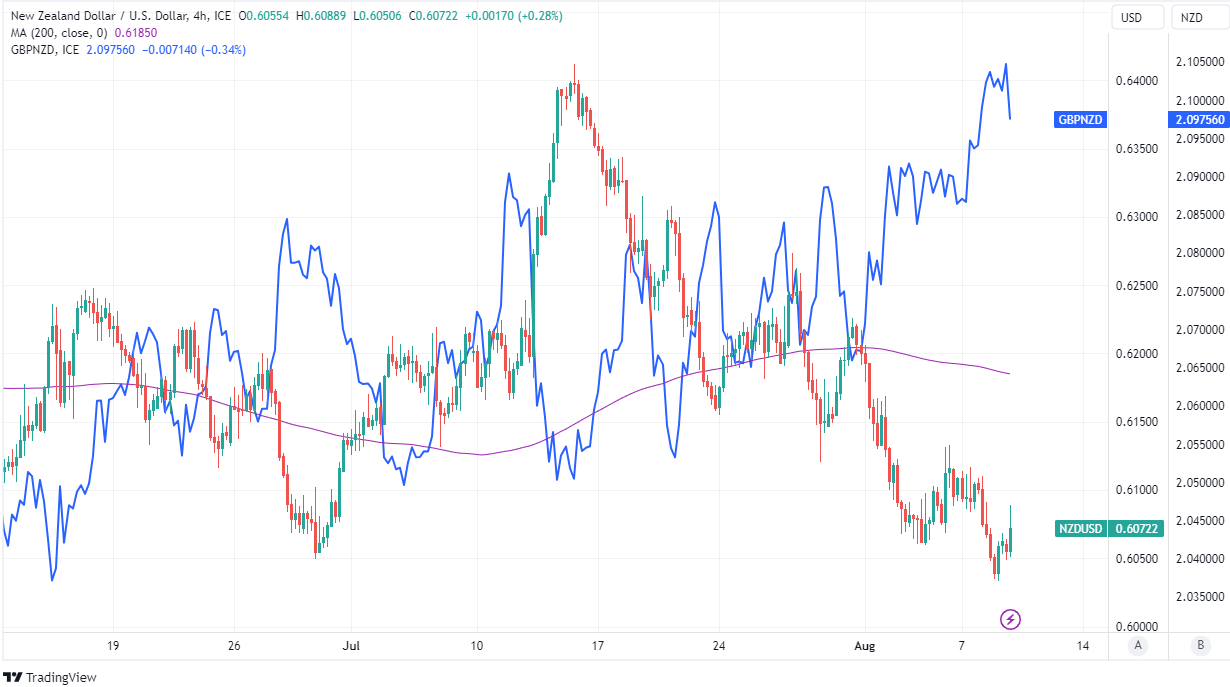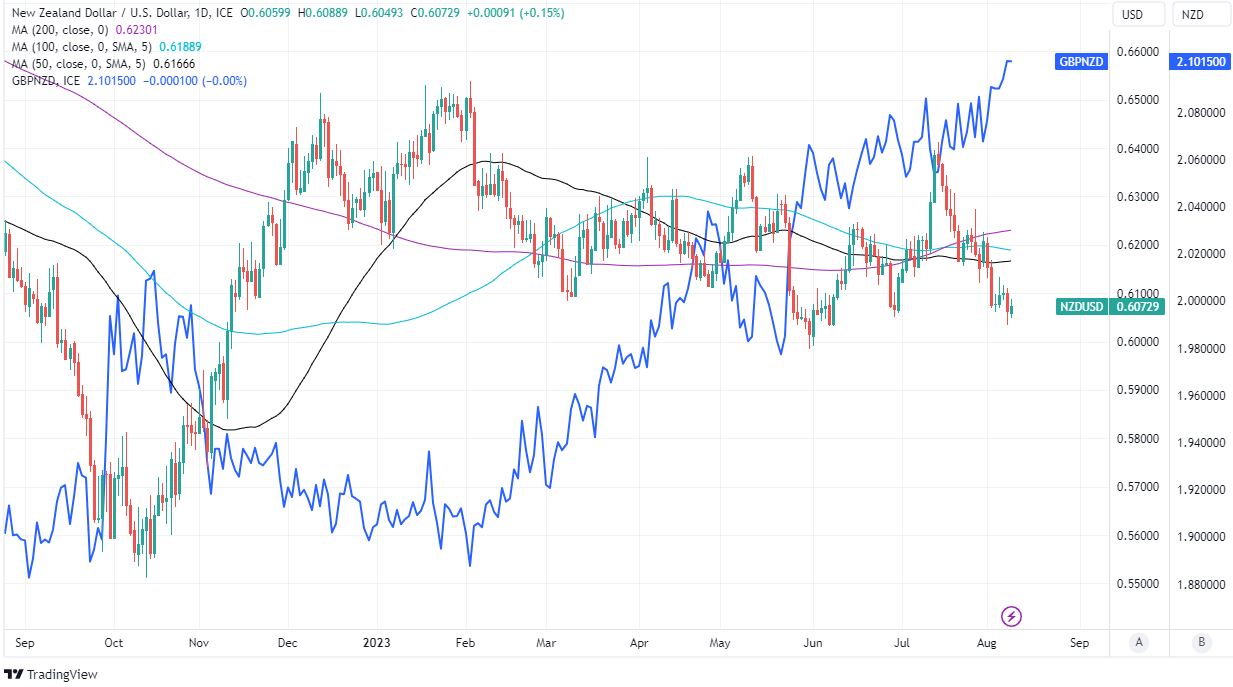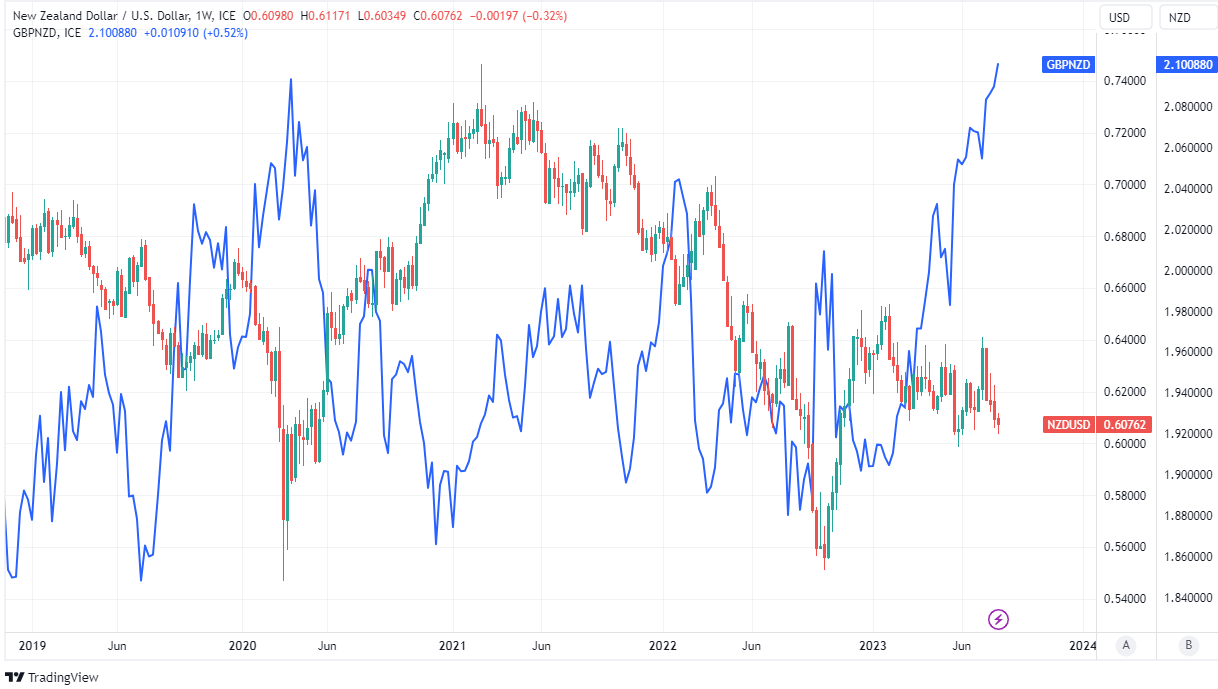New Zealand Dollar Recovery Prospects Invite Correction in GBP/NZD
- Written by: James Skinner

Pine timber being exported from Wellington, New Zealand. Photo by James Anderson, World Resources Institute.
The Pound to New Zealand exchange rate has reached its highest since the Brexit referendum in recent trade but a deep undervaluation of the Kiwi and the latest Reserve Bank of New Zealand (RBNZ) inflation expectations survey are among the reasons why a sharp correction could be likely in the weeks ahead.
New Zealand’s Dollar would push GBP/NZD back toward the 2.00 handle or below over the days, weeks and months ahead if the potentially hawkish implications of the latest RBNZ survey of corporate expectations for inflation lead monetary policy factors to become a more prominent influence in the Kiwi Dollar market again.
Such an outcome could see the main Kiwi exchange rate, NZD/USD, recovering from near its lows for the year to 0.64 or more in the weeks or months ahead with likely adverse implications for a negatively-correlated GBP/NZD pair that has risen almost two percent since early July and by 10% for 2023.
“A strong catalyst is needed to snap the Kiwi out of its rut. But don’t expect that to come from the RBNZ next week; they’re firmly on hold and happy – for now,” writes David Croy, a senior FX strategist at ANZ.
"We expect another hike, but November is a long way off," he adds in a research note ahead of Wednesday’s survey

Above: NZD/USD shown at 4-hour intervals alongside GBP/NZD.
Compare GBP to NZD Exchange Rates
Find out how much you could save on your pound to New Zealand dollar transfer
Potential saving vs high street banks:
NZ$53.50
Free • No obligation • Takes 2 minutes
New Zealand’s Dollar rose against the Dollar, Pound and other currencies early in the European trading session on Wednesday after the RBNZ said companies’ expectations for inflation in two year’s time had risen from 2.795 to 2.83% when surveyed during the current quarter.
The two-year ahead measure of inflation expectations is more closely monitored by central bankers than the shorter one-year measure because corporate expectations for prices of all things can influence pricing decisions and strategies with self-fulfilling inflationary effects.
“New Zealand markets are pricing the RBNZ OCR, currently 5.50%, to be 1bp higher at the next meeting on 16 August and to peak at 5.63% in November,” writes Imre Speizer, head of NZ strategy at Westpac, in a Wednesday market commentary.
The one-year ahead measure of inflation expectations actually declined from 4.28% to 4.17% in the current quarter while the Reserve Bank of New Zealand most recently indicated that it does not intend to raise its cash rate again but the two-year measure is one factor that could yet alter the RBNZ’s perception of inflation risk.

Above: NZD/USD shown at daily intervals alongside GBP/NZD.
Many local economists have expected the cash rate to remain unchanged at 5.5% from here and though it remains to be determined whether Thursday’s survey is enough on its own to alter the RBNZ’s stance, other local economic factors might yet sway the bank.
These include producer price inflation figures due following next week’s RBNZ decision and the second quarter’s measure of economic growth out on September 20, though some locals have flagged Wednesday’s inflation survey as likely to be relevant next week.
“A recovery in labour supply, led by a recovery in migration, was the theme of the June quarter Kiwi jobs report. The borders are open, tourism has returned, and migrants are filling long-held vacancies,” says Jarrod Kerr, chief economist at Kiwibank.
“From the RBNZ’s point of view, the better-balanced workforce, supply meeting demand, is less inflationary. And they should take comfort in the improving outlook for both wage and price inflation,” he adds in a Monday reference to recent employment developments.

Above: NZD/USD shown at weekly intervals alongside GBP/NZD.
Compare GBP to NZD Exchange Rates
Find out how much you could save on your pound to New Zealand dollar transfer
Potential saving vs high street banks:
NZ$53.50
Free • No obligation • Takes 2 minutes
Kerr and colleagues cited rising inflation expectations earlier this week as one factor that could lead the RBNZ to think about raising its cash rate again in the near future, which would likely have negative implications for GBP/NZD due to current Kiwi Dollar levels and market-implied expectations for the RBNZ cash rate.
It's not clear whether a change in the RBNZ interest rate stance alone would be enough to reverse the entirety of the Kiwi Dollar's undervaluations but the New Zealand economy could find support in rebuilding work related to February's natural disasters while the Kiwi export sector might also benefit from any pick up in Chinese growth later this year.
New Zealand’s Dollar has fallen as low as 0.60 against the U.S. Dollar and to 2.10/0.4761 against the Pound in recent weeks but at these levels the market gives no credit for the significant increase in interest rates announced since the middle of 2021, or for the RBNZ’s commitment to an inflation-targeting monetary policy.
At the current levels, the currency market prices-in the double-digit inflation-induced depreciation of the Kiwi seen over recent years but overlooks entirely the 5.5% cash rate and relevant differentials with other currencies; a better recognition of which would see GBP/NZD fall back to even below 2.0.
Likewise, the Kiwi would remain something like 'undervalued' while beneath 0.6480 in NZD/USD and above 1.0508 in AUD/NZD, the author’s calculations suggest.




